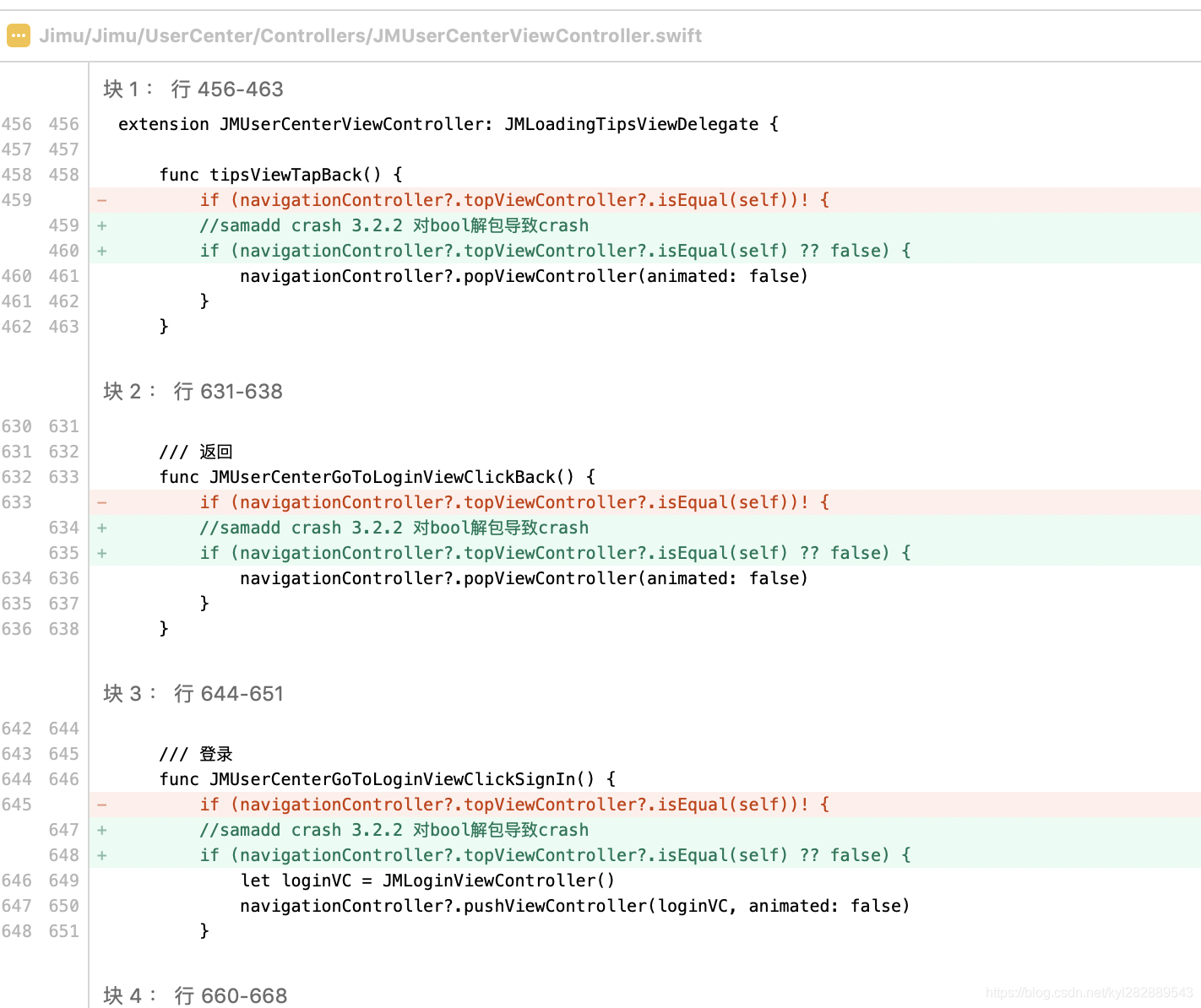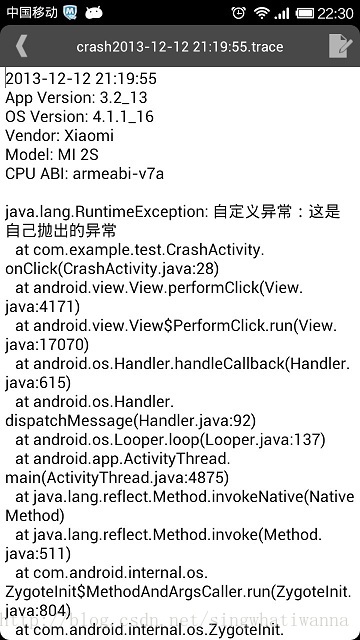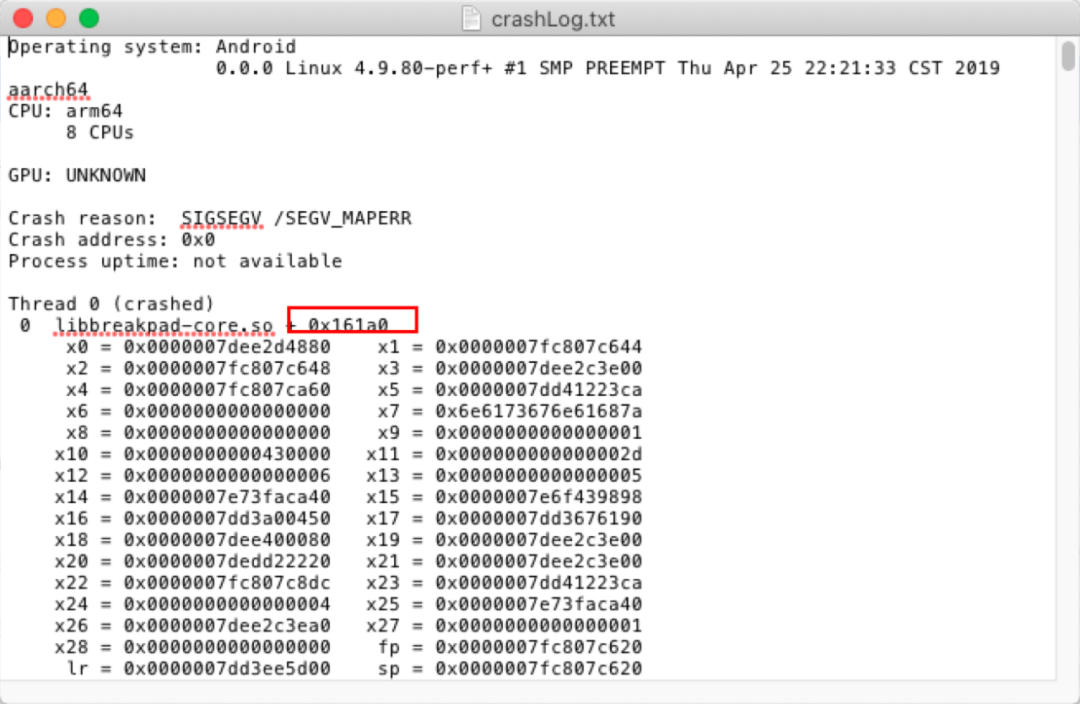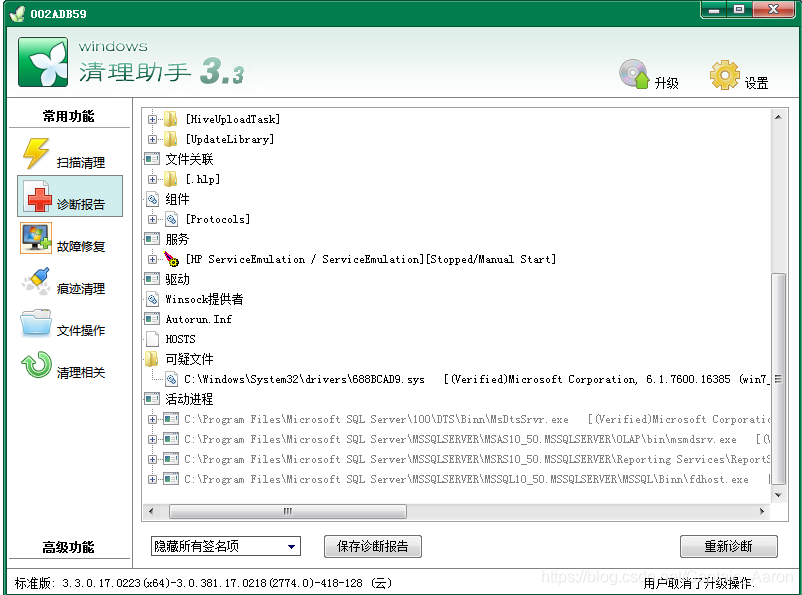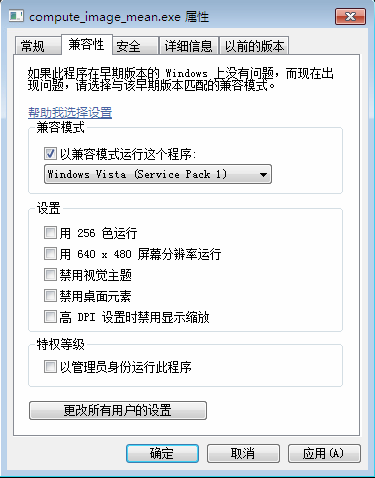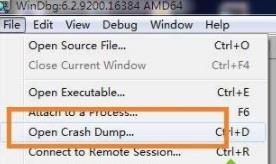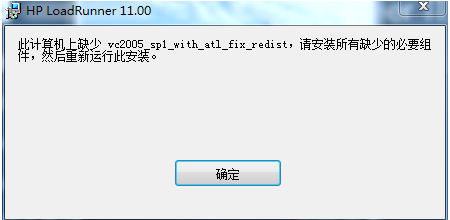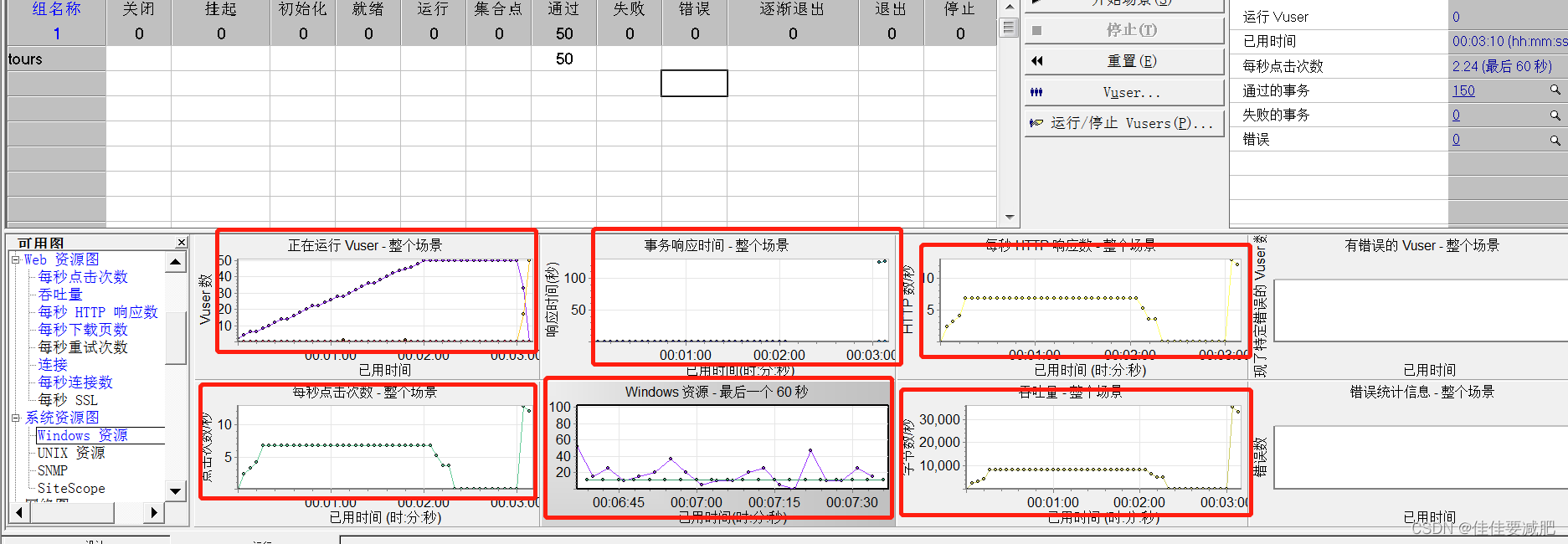Crash分析
- 1. Crash
- 2. 奔溃处理
- 2.1 选择器方法未定义
- 2.2 容器越界
- 2.3 NSSetUncaughtExceptionHandler
1. Crash
应用崩溃是影响 APP 体验的重要一环, 而崩溃定位也常常让开发者头疼。Crash的出现就是做了一些违背代码规则的操作,常见crash类型有:
- 容器越界
- 使用未初始化的变量
- 用户授权问题
- 选择器方法未定义
- 子线程刷新ui
- KVO
- 数据类型不匹配
- 内存溢出
- 野指针
- 死循环
那么该如何高效处理Crash呢?
2. 奔溃处理
2.1 选择器方法未定义
下面这个代码明显的会崩溃,因为没有logicEdu方法。
#import "ViewController.h"@interface ViewController ()@end@implementation ViewController- (void)viewDidLoad {[super viewDidLoad];// Do any additional setup after loading the view.
}
- (IBAction)btnAction:(UIButton *)sender {[sender performSelector:@selector(logicEdu:)];
}
@end
那么添加下面这个方法之后还是崩溃。
- (void) logicEdu:(UIButton *)sender {}
首先看一下堆栈。这里exception_throw是异常抛出的意思,而抛出异常的地方是+[NSObject(NSObject) instanceMethodSignatureForSelector:] 也就是慢速消息转发里面。消息发送中会通过对象的isa找到类去类的方法列表里面寻找selector,如果没有找到则去类的父类里面查找,直到找到NSObject还没有找到的话就会进入消息转发流程,

消息转发流程里面有三个补救的机会:
- 动态方法决议(添加方法)
- 快速消息转发(转发给另一个对象来处理)
- 慢速消息转发(动态签名签名一个sel)
如果这三个都没有处理,那么就会崩溃。
这里来创建一个NSObject分类来进行快速消息转发 -forwardingTargetForSelector;
@implementation NSObject (method)
- (id)forwardingTargetForSelector:(SEL)aSelector {id result = [self forwardingTargetForSelector:aSelector];return result;
}
@end
这里会报警告,因为分类方法名字和主类的方法名字一样,这时候就需要用到method-Swizzing进行imp交换。这里运行后发现还是崩溃的。method-Swizzing一般是在load里面实现,load在main函数之前就会被调用,并且是主动调用,但是在load写函数会影响启动速度,应该尽量不要在load中写耗时的操作。并且类和分类是懒加载的,但是如果实现了load,那么类的加载就会提前到main函数之前。影响启动速度的原因是会在底层调用更多的方法比如attchCategory等。 有的把方法交换写到initialize里面,这也是可以的,因为initialize是第一次调用方法的时候被调用的。但是不建议在initialize里面进行方法交换,因为可能不会调用方法。
+ (void)load {Method originalMethod = class_getInstanceMethod(self, @selector(forwardingTargetForSelector:));Method swizzleMethod = class_getInstanceMethod(self, @selector(LSForwardingTargetForSelector:));method_exchangeImplementations(originalMethod, swizzleMethod);
}
然后创建一个ForwardingTarget类,来重写消息转发方法。
id newDynamicMethod(id self,SEL _cmd){return [NSNull null];
}+ (BOOL)resolveInstanceMethod:(SEL)sel{class_addMethod(self.class, sel, (IMP) newDynamicMethod, "@@:");[super resolveInstanceMethod:sel];return YES;
}- (id)forwardingTargetForSelector:(SEL)aSelector {id result = [super forwardingTargetForSelector:aSelector];return result;
}- (NSMethodSignature *)methodSignatureForSelector:(SEL)aSelector{id result = [super methodSignatureForSelector:aSelector];return result;
}- (void)forwardInvocation:(NSInvocation *)anInvocation{[super forwardInvocation:anInvocation];
}在分类中添加静态变量target然后在load里面初始化。
static ForwardingTarget *target = nil;
这样运行后点击button就不会崩溃了,这里还可以在newDynamicMethod里面打印crash的sel。
id newDynamicMethod(id self,SEL _cmd){NSLog(@"%@",NSStringFromSelector(_cmd));return [NSNull null];
}

2.2 容器越界
下面这个代码运行后点击button会造成容器越界的崩溃。
@interface ViewController ()
{NSArray *dataArr;
}@end@implementation ViewController- (void)viewDidLoad {[super viewDidLoad];// Do any additional setup after loading the view.dataArr = @[@"第1个",@"第2个",@"第3个",@"第4个"];
}
- (IBAction)btnAction:(UIButton *)sender {NSLog(@"%@" ,dataArr[4]);
}@end那么这里如何处理容器越界的崩溃呢?
这里需要写一个NSArray的分类,然后还是使用method-Swizzing来进行处理。看到堆栈里面是objectAtIndexedSubscript报错的,所以需要重写objectAtIndexedSubscript方法。

下面这个方法其实是不正确的,这里还需要调用class_addMethod来查看是否有objectAtIndexedSubscript方法了。
@implementation NSArray (LSArray)
+ (void)load {Method originalMethod = class_getInstanceMethod(self, @selector(objectAtIndexedSubscript:));Method swizzleMethod = class_getInstanceMethod(self, @selector(lsobjectAtIndexedSubscript:));method_exchangeImplementations(originalMethod, swizzleMethod);}- (id)lsobjectAtIndexedSubscript:(NSUInteger)idx{if(idx < self.count) {return [self lsobjectAtIndexedSubscript:idx];}NSLog(@"越界了%lu >= %lu",idx,self.count);return nil;
}
@end这里用didAddMethod判断是不是有了objectAtIndexedSubscript方法,如果有了则替换方法,如果没有就交换imp。
+ (void)load {Method originalMethod = class_getInstanceMethod(self, @selector(objectAtIndexedSubscript:));Method swizzleMethod = class_getInstanceMethod(self, @selector(lsobjectAtIndexedSubscript:));bool didAddMethod = class_addMethod(self, @selector(objectAtIndexedSubscript:), method_getImplementation(swizzleMethod), method_getTypeEncoding(swizzleMethod));if (didAddMethod) {class_replaceMethod(self, @selector(lsobjectAtIndexedSubscript:),method_getImplementation(originalMethod), method_getTypeEncoding(originalMethod));} else {method_exchangeImplementations(originalMethod, swizzleMethod);}
}
这里其实还有问题,需要加一个单例来确保只交换一次。
+ (void)load {static dispatch_once_t onceToken;dispatch_once(&onceToken, ^{Method originalMethod = class_getInstanceMethod(self, @selector(objectAtIndexedSubscript:));Method swizzleMethod = class_getInstanceMethod(self, @selector(lsobjectAtIndexedSubscript:));bool didAddMethod = class_addMethod(self, @selector(objectAtIndexedSubscript:), method_getImplementation(swizzleMethod), method_getTypeEncoding(swizzleMethod));if (didAddMethod) {class_replaceMethod(self, @selector(lsobjectAtIndexedSubscript:),method_getImplementation(originalMethod), method_getTypeEncoding(originalMethod));} else {method_exchangeImplementations(originalMethod, swizzleMethod);}});}
但是这里运行后发现还是崩溃,这是为什么呢?方法的本质是消息,消息包含接受者和消息的主体(SEl和参数),这里的self是NSArray,但是奔溃信息里面的是__NSArrayI,所以需要把originalMethod里面的class换一下
Method originalMethod = class_getInstanceMethod(objc_getClass("__NSArrayI"), @selector(objectAtIndexedSubscript:));
这样就没有数据越界的问题了。当然,NSArray其他的类簇也需要这样的处理,比如可变数组__NSArrayM, 不可变空数组__NSArray0等。
2.3 NSSetUncaughtExceptionHandler
crash种类很多,那么有没有办法可以捕获所有的crash呢?苹果提供了一个API. NSSetUncaughtExceptionHandler。
写一个ExceptionHandler类,并添加类方法installUncaughtExceptionHandler,然后在这个方法里面调用NSSetUncaughtExceptionHandler。
+ (void)installUncaughtExceptionHandler {NSSetUncaughtExceptionHandler(&lsExceptionHandlers);
}NSSetUncaughtExceptionHandler里面的参数是一个c函数。
void lsExceptionHandlers(NSException *exception) {NSLog(@"%s",__func__);int32_t exceptionCount = atomic_fetch_add_explicit(&LGUncaughtExceptionCount,1,memory_order_relaxed);if (exceptionCount > LGUncaughtExceptionMaximum){return;}NSArray *callStack = [ExceptionHandler lsBackTrace];NSMutableDictionary *userInfo = [NSMutableDictionary dictionaryWithDictionary:[exception userInfo]];[userInfo setObject:exception.name forKey:LGUncaughtExceptionHandlerSignalExceptionName];[userInfo setObject:exception.reason forKey:LGUncaughtExceptionHandlerSignalExceptionReason];[userInfo setObject:callStack forKey:LGUncaughtExceptionHandlerAddressesKey];[userInfo setObject:exception.callStackSymbols forKey:LGUncaughtExceptionHandlerCallStackSymbolKey];[userInfo setObject:@"LSException" forKey:LGUncaughtExceptionHandlerFileKey];[[[ExceptionHandler alloc] init] performSelectorOnMainThread:@selector(ls_handleException:) withObject:[NSException exceptionWithName:exception.name reason:exception.reason userInfo:userInfo] waitUntilDone:YES];
}
然后在AppDelegate里面的didFinishLaunchingWithOptions调用这个类方法,确保足够早的收集到crash信息。
[ExceptionHandler installUncaughtExceptionHandler];
那么现在如果程序奔溃的话,那么就会到lsExceptionHandlers里面,这里面可以根据获得的exception来进行崩溃的记录,然后上传到服务器。
这里运行后点击Button会有数组越界的崩溃。看到保存的崩溃的地址,然后去到这个地址。

打开日志文件,看到崩溃信息保存了下来,这样就可以把这个文件传到服务器了。
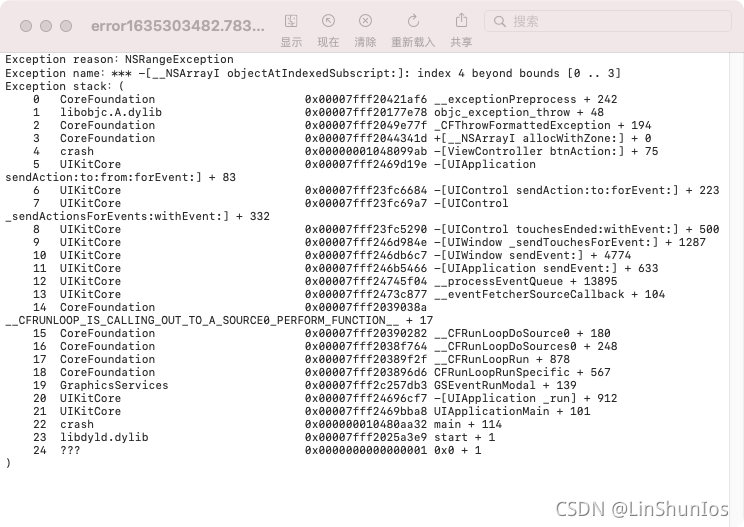
接下来去看崩溃的堆栈。看到这里有个函数_objc_terminate。

在源码中搜索_objc_terminate,发现实现如下:

之前的文章中iOS 底层探索篇 —— dyld加载流程(上)写到_objc_init也调用了exception_init方法,那么exception_init对异常进行了什么处理呢?
看到这里调用了set方法,这里就是说,这个terminate会一直在跑,如果发生了异常,就会调用_objc_terminate回调函数。所以_objc_init就做了异常的回调处理。
void exception_init(void)
{old_terminate = std::set_terminate(&_objc_terminate);
}
回到_objc_terminate,看到上面写的如果是objc object 就会调用uncaught_handler,那么就会调用uncaught_handler方法,那么就寻找uncaught_handler,方法进行了赋值。
static objc_uncaught_exception_handler uncaught_handler = _objc_default_uncaught_exception_handler;
往下看还有对uncaught_handler赋值的地方,但是搜索确没有地方调用它,所以是上层的API。
objc_uncaught_exception_handler
objc_setUncaughtExceptionHandler(objc_uncaught_exception_handler fn)
{objc_uncaught_exception_handler result = uncaught_handler;uncaught_handler = fn;return result;
}
看到NSSetUncaughtExceptionHandler和objc_setUncaughtExceptionHandler名字非常相似,这里就知道NSSetUncaughtExceptionHandler是对objc_setUncaughtExceptionHandler的封装。之前的调用 (*uncaught_handler)((id)e), 也就是调用外面传进来的回调函数,所以lsExceptionHandlers方法里面也有一个NSException。
